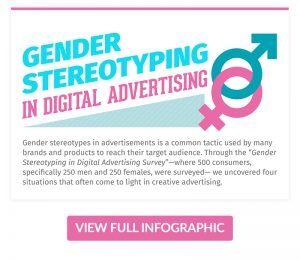 Does something as simple as the font and color treatment of an advertisement impact consumer’s perception of it? Yes, but not in the way one might expect. With only ad copy and no design, survey respondents agreed a tagline was targeting women.
Does something as simple as the font and color treatment of an advertisement impact consumer’s perception of it? Yes, but not in the way one might expect. With only ad copy and no design, survey respondents agreed a tagline was targeting women.
“Makes your hair stronger + more resilient”
However, when provided more information on the font and colors of the men’s ad tagline—respondents had mixed opinions on who the ad was targeting.
The First Example: Dove for Men Tagline

When shown only the tagline copy for a Dove For Men ad, about 3% of respondents thought it was targeting men, while more than half thought it was targeting women. However, when shown a snapshot of the tagline within the ad itself, revealing the font and color treatment, 22% of respondents thought it was targeting men, and those who thought it was targeting women dropped to 36%. Meanwhile, between both examples, more than a third of respondents thought the tagline was targeting both men and women.
To summarize, the majority of respondents thought the tagline copy on its own was targeting women. After they were shown the font and colors of the tagline, there was a split in opinions about whether it was targeting men (22%), women (36%), or both (39%).
Overall, most respondents do agree that there is a connection between the creative aspects of advertising and the reinforcement of gender stereotypes.
The results below seem to suggest that respondents feel more strongly about images, words, and phrases perpetuating gender stereotypes in advertisements, compared to colors and fonts. While the majority agree in some degree that colors and fonts can also promote gender stereotypes, this statement saw the largest portion of respondents in disagreement.
Colors and Fonts
- 60% of respondents agreed that colors and fonts in advertisements promote gender stereotypes.
Images
- 80% of respondents agreed that images in advertisements promote gender stereotypes.
Words and Phrasing
- 75% of respondents agreed that words and phrasing in advertisements promote gender stereotypes.
These results show that the colors, images, and wording used in an advertisement can sway a consumer to consider the brand or product promoting to only one gender type. Choosing neutral wording, colors, and images with both male and female would help advertisers portray that the product being advertised can be used for either male or female.







